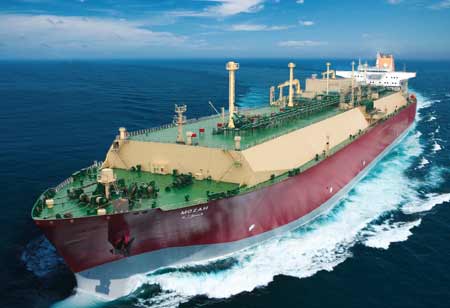THANK YOU FOR SUBSCRIBING
THANK YOU FOR SUBSCRIBING

By
Logistics Transportation Review | Tuesday, August 20, 2024
Stay ahead of the industry with exclusive feature stories on the top companies, expert insights and the latest news delivered straight to your inbox. Subscribe today.
The transportation of liquids and gases is significant for many industries and organizations. These vital resources are essential for the running of many businesses and organizations and for the everyday lives of people worldwide. Without them, modern lives would not be possible.
The transportation of liquids and gases is critical to modern society. From the transportation of oil and gas to the distribution of water and other essential fluids, the safe and efficient movement of liquids and gases is essential for human progress and development. This article will explore the importance of liquid and gas transportation and the various means of accomplishing this vital task.
One of the most critical areas of liquid and gas transportation is oil and gas transportation. These vital energy resources power much of the world's economy, and their transportation is crucial to their availability and affordability. Pipelines, tankers, and trucks are the primary means of transport for oil and gas. Pipelines are the most efficient means of transportation, as they can move large volumes of oil and gas over long distances with minimal environmental impact. Tankers and trucks are used when pipelines are unavailable, but they are less efficient and can pose a greater risk of environmental damage and accidents.
Another vital area of liquid transportation is the distribution of potable water. The world's population will advance nearly 10 billion by 2050, making access to clean drinking water even more crucial. Water transportation is accomplished through a vast network of pipelines, pumps, and treatment facilities. This infrastructure is critical to ensuring people access safe and clean drinking water.
The transportation of gases is also essential for modern society. Gases such as natural gas, propane, and hydrogen are used for various purposes, including heating, cooking, and transportation. The primary means of transporting gases are pipelines and tankers, although truck transportation is also used for smaller volumes. The transportation of gases is critical to ensuring that these essential resources are available to consumers when and where they are needed.
The importance of liquid and gas transportation extends beyond the energy and water sectors. Many industrial processes rely on the transport of liquids and gases to function. For example, producing chemicals, pharmaceuticals, and food products all require the movement of liquids and gases. With the ability to transport these materials, many essential industries would be able to operate.
The transportation of liquids and gases has its challenges, however. One of the most significant challenges is ensuring the safety of the transport infrastructure and the surrounding environment. Accidents and spills can have severe consequences, including environmental damage and the loss of life. To mitigate these risks, transport companies and regulators have developed strict safety protocols and regulations to ensure that the transportation of liquids and gases is as safe as possible.
Another challenge is the cost of transportation. Pipelines are the most efficient means of transportation but also require significant upfront investment. Tankers and trucks are less expensive to operate, but they are less efficient and can be more costly in the long run. Balancing transportation costs with the need for efficient and safe transport infrastructure is a critical challenge for policymakers and industry leaders.
Despite these challenges, the importance of liquid and gas transportation cannot be overstated. The safe and efficient movement of liquids and gases is essential to daily life, from powering vehicles and homes to providing clean drinking water. As the world's population increases, the need for these resources will only increase, making the development and maintenance of transport infrastructure even more critical.
In conclusion, the importance of liquid and gas transportation is evident. From the transportation of oil and gas to the distribution of water and other essential fluids, the safe and efficient movement of liquids and gases is necessary for human progress and development.
I agree We use cookies on this website to enhance your user experience. By clicking any link on this page you are giving your consent for us to set cookies. More info





